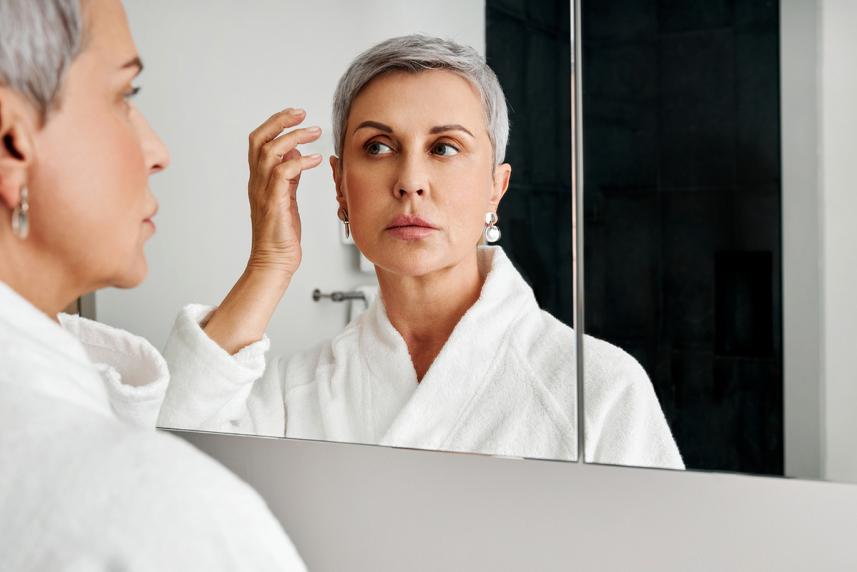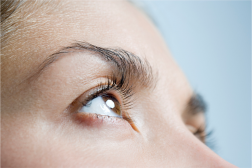
Compare our prices. You might be surprised by how much you can save by transferring to the Optum Store.

If your fringe is suddenly falling out, you should get checked out by a doctor. Learn about medical concerns that can lead to lash loss.
It’s normal to lose a few eyelashes each day. That’s just part of the lifecycle of your lashes as they grow out and replace themselves. But if you notice that you’re losing a lot of lashes all at once, it could be a symptom or side effect of an underlying health issue.
Certain medical problems — which can involve your eyes or somewhere else on your body — can cause your fringe to fall out. So how do you know if you should call a doctor? Book an appointment if your lash loss is sudden onset (it comes on quickly), is in a single small area rather than the entire lid, or includes redness or irritation, says ophthalmologist Yuna Rapoport, MD. She’s a former fellow at the Massachusetts Eye and Ear Infirmary of Harvard Medical School and is in private practice in New York City.
You can consult an ophthalmologist (a doctor who specializes in eyes and vision), an oculoplastic surgeon (a specialist in ophthalmology and plastic surgery) or a dermatologist (a doctor who’s an expert in skin, hair and nails).
The good news is that in many cases you can get your lush lashes back eventually. Learn more about the symptoms, causes and treatments of conditions that can lead to lash loss.
(Read more about dealing with hair loss here.)
What it is: Blepharitis, or inflammation of the eyelids, typically shows up along the lash line and causes your eyelids to get swollen and itchy. This inflammation can prompt lashes to fall out, says Dr. Rapoport. It can also cause your lashes to grow at odd angles (which is called trichiasis).
Blepharitis is not contagious, and it usually won’t harm your vision. But it can be extremely uncomfortable. Your eyes may feel scratchy, gritty and watery. In more extreme cases, blepharitis can lead to:
Blepharitis is a chronic condition, meaning you can get it over and over. The exact cause isn’t known, but it has been associated with:
Also, people who wear contacts sometimes get blepharitis because the bacteria from their fingers can get on eyelids when they put in their lenses, says Dr. Rapoport.
Treatment options: The first step is to keep your eyes and eyelids clean. Soak them regularly with warm compresses, using a special eyelid cleansing product. It’s a simple process, says Dr. Rapoport. You just need to do 30 seconds of warm heat nightly and wipe your eyes with a foam called Ocusoft®, using a cotton pad. Wash off the eyelids from inner to outer corner.
If that doesn’t resolve the problem and your eyelids are infected, your doctor might prescribe an antibiotic or a topical steroid, or both. A topical cyclosporine (brand name: Restasis®) is an option if you don’t respond to antibiotics or steroids.

Compare our prices. You might be surprised by how much you can save by transferring to the Optum Store.
What it is: Alopecia areata is a type of autoimmune disease that causes hair loss. Autoimmune diseases occur when your body’s immune system attacks healthy tissue by mistake. With alopecia, the body attacks the hair follicles, causing hair to fall out, says Tomi Lee Wall, MD. She’s a board-certified cosmetic dermatologist in private practice in Oakland, California. Alopecia can happen in big areas or in patches, on your scalp or anywhere on the body. Sometimes the hair grows back, but sometimes it doesn’t. “Not all cases of alopecia involve the eyelashes,” notes Dr. Wall. And sometimes people lose their eyelashes but still have hair on their head.
Treatment options: Research shows that the prescription eyelash serum Latisse® (generic name: bimatoprost) is the only effective treatment for lash loss due to alopecia areata. Talk to your dermatologist about whether it’s an appropriate treatment for you.
You can fill your prescription for Latisse at the Optum Store and have it shipped directly to your front door.
What it is: Loss of lashes can be a symptom of eyelid cancer, specifically basal cell or squamous cell skin cancers. About 5% to 10% of all skin cancers occur on the eyelids, according to Columbia Ophthalmology. And basal cell carcinoma is the most common form of carcinoma. Dr. Wall has diagnosed eyelid cancer in patients who noticed that a section of their lashes had fallen out, leaving a blank area along the lash line. “If you do start to lose a portion of your eyelashes, you should be seen by an eye doctor or dermatologist. You don’t want to miss a cancer in those areas,” she says.
Treatment options: The doctor can do a biopsy (a sample of tissue) and run tests to diagnose it. Mohs surgery is the first-line treatment for basal and squamous cell cancers around the eyes, according to the Skin Cancer Foundation. This is a specialized surgery for skin cancer on the face that spares healthy tissue and leaves only a small scar. In many cases, your lashes will grow back after you’ve recovered from surgery.
What it is: If you’re undergoing chemotherapy treatments for any kind of cancer, it’s possible that you’ll lose your hair. Not all chemotherapy medications cause hair loss, but those that do can affect your eyelashes as well as the hair on your scalp and body.
Treatment options: The good news is that your lashes are likely not gone for good. But you do need to be patient. “Usually lashes return completely after chemotherapy,” says Dr. Rapoport. But that process can take 4 to 9 months.
If you’ve experienced lash loss due to some of these conditions, you might benefit from using Latisse, the only prescription eyelash serum approved by the U.S. Food and Drug Administration. Latisse is a prostaglandin, a chemical with hormone-like effects on the body. It works to increase the amount of time that your lashes stay in the growth phase. You brush it on the top lash line.
There are also over-the-counter lash serums that can improve the appearance of lashes, although they’re not legally allowed to claim that they make your lashes grow. It may seem strange to use a lash serum if you don’t have lashes, but they could help, says Dr. Wall.
“We all have vellus hairs, those baby-fine hairs like the kind on your face. There might be vellus hairs on your eyelids, and those can be stimulated,” she says. (Want to know more about eyelash serums? Read our piece on what to know before trying one.)
Ultimately, if you’re worried about losing your lashes or have experienced a change, don’t dismiss it as a vain concern. Healthy eyelashes perform the important job of keeping dust, allergens and other foreign bodies out of the eyes. Paying attention to changes in your lashes could be one of the healthiest things you do for your eyes.

Complete a free assessment. If our health professionals determine you’re a match, you can get the eyelash growth serum Latisse delivered to your door within 24 hours.
Additional sources
Eyelash loss basics: American Academy of Ophthalmology (2018). “Why are my eyelashes falling out?”
Eyelid cancer statistics: Columbia Ophthalmology. “Eyelid cancer”
Mohs surgery: Skin Cancer Research Foundation (2018). “Focus on Eyelid Skin Cancers: Early Detection and Treatment”